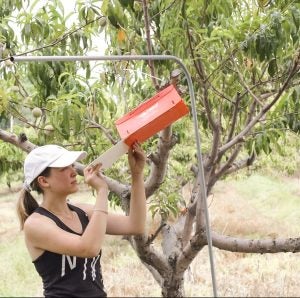Identifying a plant pathogen found on invasive black swallow-wort
Abstract:
Black swallow-wort (Vincetoxicum nigrum) is an invasive vining plant that is native to the southwestern region of Europe. It was introduced to North America in the 1900s and has now been recorded in over 21 states in the US. In 2018 a pathogen was found on black swallow-wort, which was observed to cause significant mortality. The focus of this study was to identify the fungal pathogen associated with the plant disease symptoms from Rhode Island locations. Field collections were made starting in late June. Those leaf samples were then placed into moisture chambers to encourage growth and symptoms were observed. There were three symptoms recorded: a purple spot on the upper and lower leaf surfaces and the stems of the plant, a brown fungal growth only on the under surface of the leaf, and a white fungal growth that appeared around the edges and would eventually cover the entirety of the brown spot. Plant tissue was then cultured onto petri-dishes containing nutrient filled agar. Once uncontaminated growth was observed the samples underwent DNA extraction, PCR, and were sent to URI’s genomics lab for Sanger sequencing. The results of the DNA analysis identified three fungal species complexes: Colletotrichum acutatum, Fusarium tricinctum, and Alternaria alternata. Colletotrichum lineola, a plant disease discovered on swallow-wort in Russia, displays very similar symptoms to those we observed in the field and in the lab on black swallow-wort. Colletotrichum lineola does not display any symptoms of white fungal growths, so further research will be needed to confirm the identification of the fungal pathogen, or there may be secondary pathogens involved. Future research is needed to determine if the disease has the potential to be used as a biocontrol agent against invasive swallow-worts.
 Home
Home Browse
Browse Close
Close Events
Events Maps
Maps Email
Email Brightspace
Brightspace eCampus
eCampus




